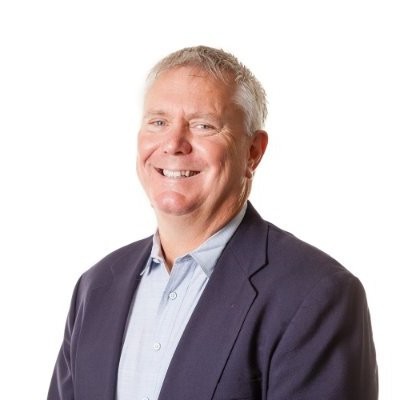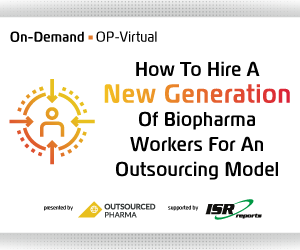2 CDMOs Better Than All-In-One: The "Best-In-Breed" Trend

By Louis Garguilo, Chief Editor, Outsourced Pharma

We’ve uncovered a global trend in drug development and manufacturing outsourcing.
Or rather, it uncovered itself. We’re of the first to dig deeper, and assign a wider implication.
Within a span of some 20 days, CDMOs Vetter and Rentschler of Germany, and California-based Avid Bioservices and Argonaut Manufacturing Services, announced strategic, “co-marketing” alliances.
To get beyond the public pronouncements, I spoke directly to senior executives at all four service providers.
They informed me what we are witnessing is part antidote – and potentially a better option – to the “one-stop-shop” composite.
I’ll start with the California connection, and report on Vetter and Rentschler next.
A Trend In The Marketing
Most newsworthy is not a partnering between CDMOs in an effort to both elongate and streamline the services they can provide customers. This has been a part of the industry.
Rather, it’s the added level of formality and public declaration.

Woodard, who founded Argonaut in 2016, says his company’s announced relationship with Avid is actually a continuation of his organization’s modus operandi.
“We’ve always been advocates of an ecosystem partner approach that brings together best-of-breed companies – those who can closely collaborate to provide broad solutions for customers.”
Says Avid Chief Commercial Officer, Timothy Compton: “These relationships allow us to compete with the one-stop-shop CDMOs, but while continuing to focus on what our company does best.”
And that’s the key, explains Woodard:
“Focusing on core competencies is a competitive strategy. It allows you to tell the world what you think you are best at, and allows partner companies to do the same.

“M&A may be an opportunity for bigger companies to continue to grow and provide new services. However, to claim to be the best in the world at everything is probably unrealistic in this space.
“In our industry it's time for the diagnostic, life-sciences, and biopharma spaces to step up and recognize what we can be good at separately, and then effectively collaborate to better serve our customers.”
CUSTOMER PERSUASION
Is stringing together “best-in-class” CDMOs an outsourcing model today’s biotechs, for example, will prefer?
“If customers believe in going to one, large CDMO, there’s nothing wrong with that. I'm not saying it doesn't have its place,” responds Woodard.
“What today’s biotechs should recognize,” he says, “is going that route means a compromise on capabilities in one area or another.”
“A best-in-breed solution is not a compromise in any area. And, it provides more flexibility to choose partners,” he avers.
“Companies are people, and these people are the ones you're entrusting with your API, and the development of your product. It’s the rosters of both our companies that will sell this idea collaboratively to our customers.”
Still, some readers will be thinking: Can working with two (or more) CDMOs be as streamlined as working with a single service provider?
“In the case of Argonaut and Avid,” says Woodard, “we are 45-minutes apart and situated within a biotech cluster. We have likeminded individuals in both companies who have worked together for 20 years. That’s great for the customer.”
Back to Compton at Avid, a CDMO about twice the size of Argonaut with 230 employees, and decades of experience, he iterates, “The overarching strategy is to satisfy our customers.”
Upon joining Avid this year after a career in small molecules, he “noticed right away the trend to requests from prospective biopharma customers for end-to-end service offerings.”
The key, as both he and Woodard stated above, is to offer the best panoply of those services, “while staying focused on what each company does well.”
“For example,” Compton explains, “Argonaut’s new fill-finish line is being put in place for the high-value APIs we're producing at Avid. They have a ‘low line loss,’ and more robotics. It seems an ideal system for putting biologics into vials or syringes, and cartridges. For that alone, it seems like it's a great opportunity for our customers.”
Best-In-Breed, But Best Location?
We couldn’t leave this initial “best-in-breed” discussion without visiting the U.S. vs. Offshoring debate we’ve been engaged in these many months.
Here’s Woodard of Argonaut:
“I'll just tell you my belief. I never would have started a manufacturing company in the United States, and more specifically here in California, had I not believed that we could build a competitive operation, and help create and take part of this industry’s manufacturing renaissance.
“Not just bringing back the ‘good old days’ of manufacturing, but a renaissance implementing highly advanced, technology-oriented manufacturing capabilities.
“I believe we can dominate –beyond compete, but dominate – as a manufacturing sector in life sciences, and more specifically in biopharma and diagnostics.”
Compton wants to make clear an additional point:
“We are leveraging collaborations. However, they are not exclusive. We’ll remain agnostic to the partner that ultimately our customer wants to work with.
“And with that, there’s an added level of flexibility and optionality in this model. It reduces some risk for customers who won’t have their product travel across the country or ocean, particularly given the times we live in. There's a comfort in the aspects of this model.”
Of course, for the most part, that’s the same selling point of the ever-expanding “end-to-end” CDMOs.
Nonetheless, both Woodard and Compton agree, we’ll see more public announcements like theirs between CDMOs.
“The proof is always in the results, but I believe specifically the small to mid-cap CDMO space will continue to evolve to this model,” says Woodard.
“It’s viable, and I believe for the client, a preferred approach to obtaining best-of-breed capabilities.”
Compton says, “We’ll have more public disclosure of relationships, and sharing opportunities to support the customer's needs. It certainly is a tool on our end for our BD teams to present to customers.”
And the customers themselves? I ask Compton. Will they become more open to announcing their CDMO relationships?
“That's a great question,” he says with a half-laugh. “Customers in the past have been reluctant to do press releases, for example. But the trend I see of late is they are more open to public disclosure.”
If so, CDMOs can start to promote their best-in-breed customers.

